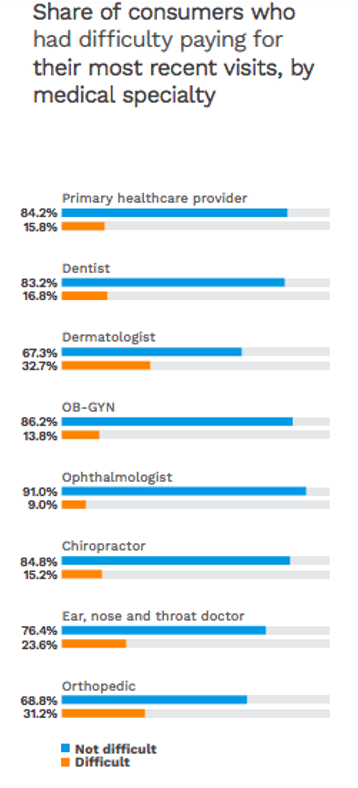Payments Power Healthcare’s Much-Needed Evolution

Consumers know how to shop: Pick the product, check the price, put it in the cart (virtual or physical), head to checkout and pay. But it’s a very different experience with healthcare. In that case, someone goes to the doctor, gets treatment, hands over an insurance card, gets several things in the mail that look like bills but aren’t, then gets something that is actually a bill — at which point they get to pay off their care at the same time that they find out how much it costs.
To say it is a suboptimal commerce experience is putting very mildly — and it’s not one that modern patients and providers are going to accept all that much longer, Rectangle Health CEO Dominick Colabella wrote in PYMNTS’ new eBook on the connected economy, joined by 34 other payment industry CEOs. “[The payments networks’] efficiency and scalability have become embedded into every facet of our lives,” he wrote.
Every facet except healthcare, that is, where paying remains a problem both in terms of process and affordability. Healthcare as an industry in the U.S. is afflicted by business ills, growing directly from the sector’s digital obsolescence. Combine those systemic inefficiencies with an economic crisis like the one the country is currently suffering — which has left many uninsured and unable to cover out-of-pocket costs — and you get a healthcare system that has become incredibly sick.

According to PYMNTS’ newest Healthcare Payments Innovation Playbook, it’s a problem that is pushing toward a critical point, as patients increasingly want their healthcare experiences to be more like the rest of their digital retail experiences, with user-friendly digital payment options that are easy to understand and access. They also want comprehensive information on their payment options so they can make informed payment choices.
Providers, notably, want the same. In a conversation with Karen Webster, Tim Barry, co-founder and CEO of VillageMD — which through its subsidiary, Village Medical, provides value-based primary care services from 2,800 physicians in nine states — observed that healthcare needs a new “digital front door” into the primary care system.
“Primary-care doctors — people who go into the profession of family practice, internal medicine and geriatrics — have been given a raw deal,” he said. “The healthcare system has not given them what they need in order [to] deliver the best care they can. And so we said: ‘We’re going to change that.’ And we started providing the doctors with more resources, more data — all these tools and capabilities so they can deliver care 24 hours a day, seven days a week.”
The good news, Colabella noted, is that it’s becoming incredibly clear that consumers want to be able to shop for healthcare “just as they would for any other consumer good or service.” And that desire is bringing ever more diverse players into the space. Amazon, for example, has announced its latest big push into healthcare with the expansion of its telehealth service, Amazon Care, to employees in all 50 states starting this summer. It also plans to make the service available to other employers later this year.
“Amazon Benefits has been the enterprise customer that we’ve been serving to date. Now, looking at other enterprises, understanding their needs, we think a lot of the needs are similar,” said Kristen Helton, director of Amazon Care, according to reports.
And while Amazon’s entry into the segment is eye-catching, the field has already grown quite crowded and competitive over the last year. According to the Centers for Disease Control and Prevention (CDC), during the very first week of the pandemic, the final week of March 2020, telehealth visits rose 154 percent over 2019.
As Ran Shaul, co-founder and chief product officer for telehealth provider K Health, told PYMNTS in a recent conversation, it has become increasingly clear how technology can make healthcare much more accessible for everyone. “For $19 on a platform, you can solve 85 percent of all the reasons a patient will go to a primary care doctor,” Shaul said. “So you don’t have to think twice. That’s the big promise here. Stop thinking about a doctor’s visit and go do it now. That doctor visit is so important because it will determine your health adventure.”
And perhaps most importantly, Colabella wrote, healthcare is out of time. Patients and providers know that there are better ways to do this, and are no longer likely to believe the age-old excuse that healthcare is simply too different, too costly and too challenging to change. That has been decisively disproved by the last year. Healthcare, he observed, can move plenty fast when it has to do so.
“Mandatory implementation of social distancing and safety precautions proved that healthcare is capable of accelerated adaptation,” Colabella wrote. “…Healthcare converted to using and offering new digital methods faster than what had been done historically, and now is on a more level playing field with other industries than ever before.”
